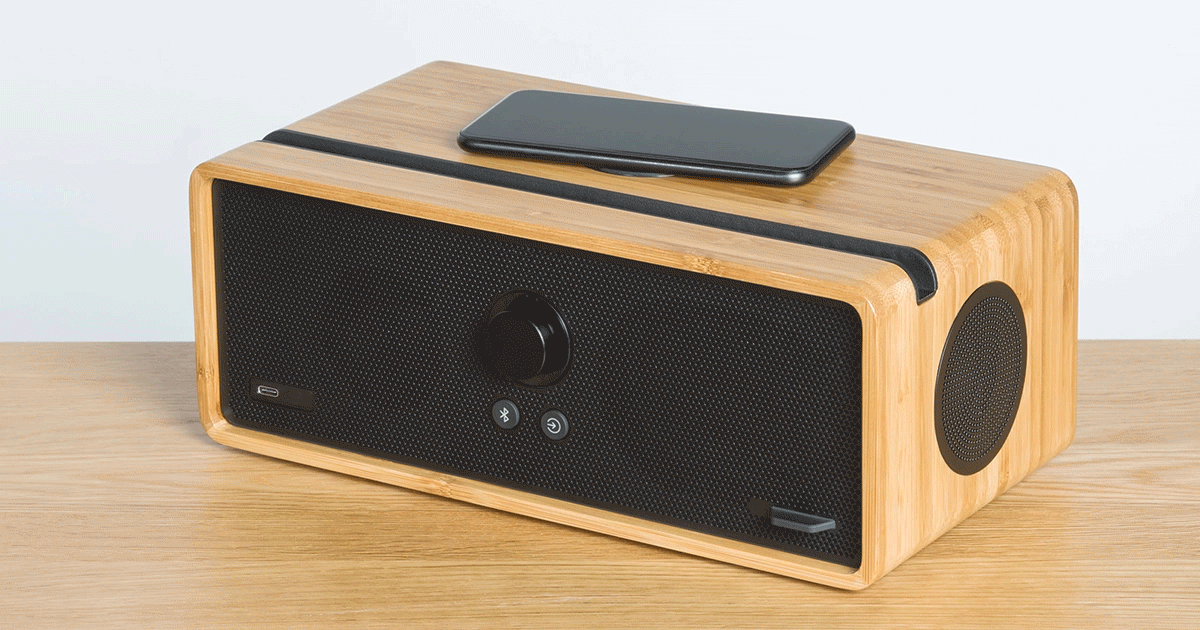Wireless charging: introducing the Qi charging pad
Seeing as we've built Qi wireless charging into our latest offering, the DOCK E30, we thought we'd provide you with a quick primer on this exciting new breakthrough in wireless charging.
Futuristic as it may sound, wireless charging is not new. In 1831 Michael Faraday demonstrated the principle of magnetic induction, using two wires wrapped around a metal ring and a magnet. Some decades later the mysterious Nikola Tesla experimented with the same technology - supposedly to power light bulbs without wires.
It took about a hundred years but we finally started to see this form of wireless charging reach the mainstream in the 1990s - where it found use in items like wireless toothbrushes and razors.
That said, wireless charging for more complex smart devices has taken a long time to develop to the point of practicality. In the past, sluggish charge rates and ridiculously tiny coupling distances limited the technology.
But time and technology march forward. Today, wireless charging for your energy-hungry smart devices has finally arrived.
Introducing: Qi
There are a few wireless charging iterations on the market today; however, by far the largest and most influential is 'Qi' (pronounced ‘chi’) which takes its name from the Chinese word for 'energy flow'.
Formed in 2008, Qi is the result of many, many years of research, and is backed by a large association of manufacturers called the Wireless Power Consortium (WPC). As an open standard, it has passed all the rigorous safety tests required for any electronic, mass market technology.
Let's be clear, a wire is still involved, your Qi charging device needs to be connected to the mains. You just don't need a lead to connect to your charging device to your phone anymore. Simply put the appropriate device on the pad and let it do the work.

What are the benefits?
Fundamentally, the tradeoff in wireless charging is between convenience and recharge speed.
Wireless charging is not (yet) as fast as conventional cable charging, though it does retain charge just the same as it would otherwise. Since we thought you'd prefer the choice, we also built a high performance USB-C port into the DOCK E30.
So, for example, a good use case for wireless charging is when you can leave your phone in the same place for an extended period of time, such as just before bed.
All that said, doing away with wires offers a multitude of benefits.
There's no power cords to worry about
One of the main premises of wireless charging technology is, of course, a future free of power cords.
An end to broken cables, cable format incompatibilities, damaged port covers, time spent plugging and unplugging wires, and limitations imposed by the number of USB ports on your charging device. Plus an end to the countless discarded cables and power adapters filling our landfill sites.
It simplifies charging
Wireless charging could, one day, mean one charger for all of your devices. Qi transmitters in convenient public places could spell an end to 'low battery anxiety' and replace the need to carry external chargers with us.
As there doesn't need to be any exposed connectors, chargers could be made waterproof, which creates a lot of possibilities for creative placement.

Qi is by far the most popular standard
It's without a doubt the most commonly available and best supported standard in wireless charging today. Qi is used in 900+ products and has backing from some of the world's largest manufacturers.
On the charger side, you'll find Qi transmitters built into furniture, kitchen countertops, cars, our latest E30 - almost anywhere you could want to charge your device, plus a huge range of affordable standalone chargers in a variety of sizes and formats. In fact, you may already have spotted Qi chargers in public spots - perhaps built into the tables at airports and forward thinking offices.
On the device side (i.e. things that can be charged using Qi), you'll find a large and growing number of smart devices that can be recharged by your Qi enabled device. Phones, tablets, smart watches - more are added regularly.
How does Qi work?
The technology behind Qi uses electromagnetic fields created by one device (i.e. your E30) to induce an electrical current in a metal coil inside another device (i.e. your phone). Essentially, when you bring the coil inside the charger close enough to the coil inside your phone, an induction field is created, and power passes to your phone.
Qi improves upon this concept a little, using a principle they refer to as 'resonance' to extend the size of the field to about 45mm. The transmitter transmits a signal to see if a Qi-compatible device is nearby, activating the field only when it detects a compatible device. All Qi certified devices are guaranteed to be compatible with each other Qi certified devices.
Asides from the fact that there are no cable trip hazards, Qi is safe by design - it operates at a low frequency (around 200 kHz), which limits interference from other devices. It creates a minimal amount of electromagnetic radiation, even when charging, and is quite heavily shielded.
So there you have it
As the world's most popular wireless charging standard, Qi is likely very likely to see greater device compatibility and technological improvements in the coming years.
We’re excited we to incorporate it into the DOCK E30, along with a high speed USB-C port - for those times that you want to use a wire, or for any devices that are incompatible. If you’d like to take a look at our exclusive pre-order offer for our game changing speaker, feel free to head over to our product page here.





